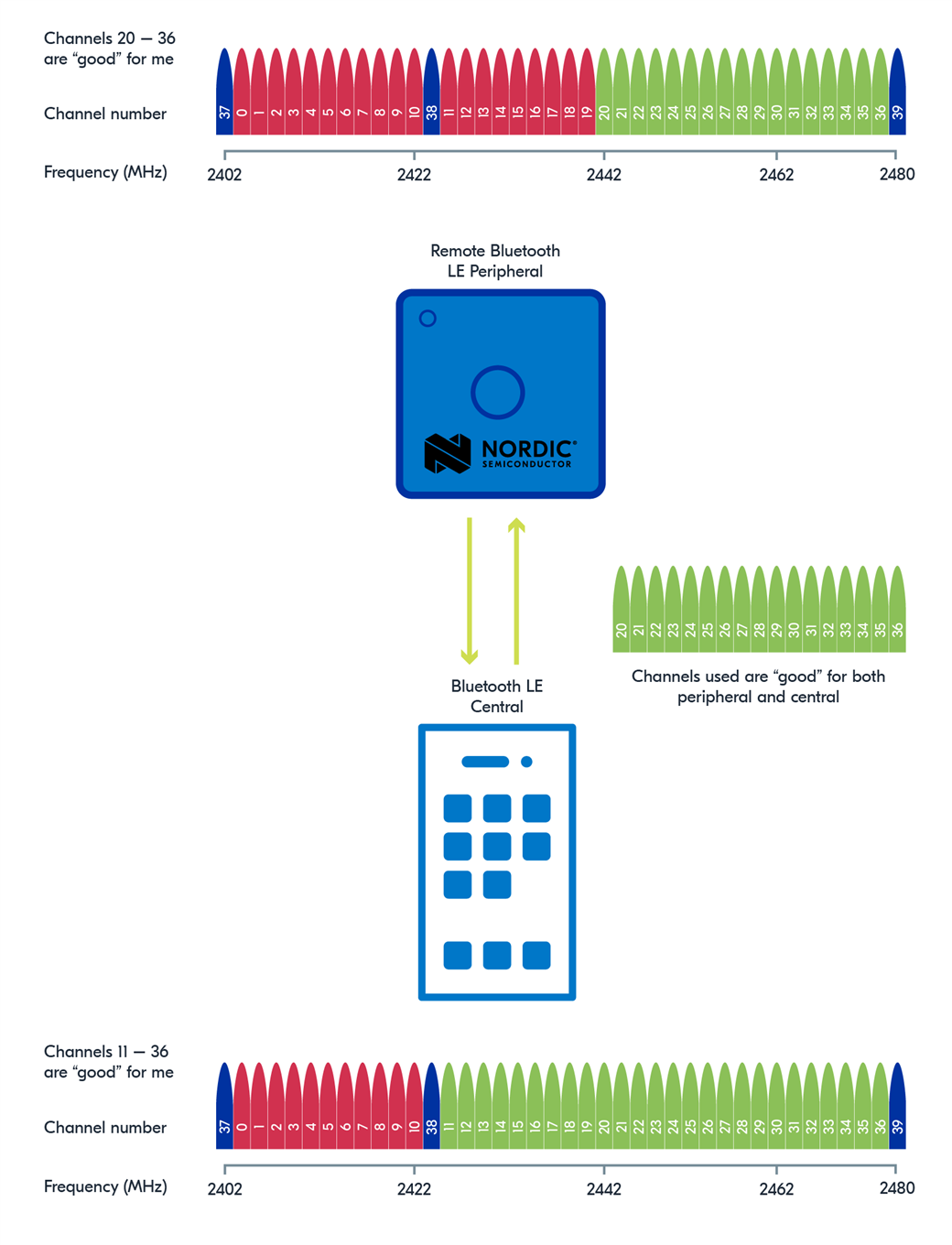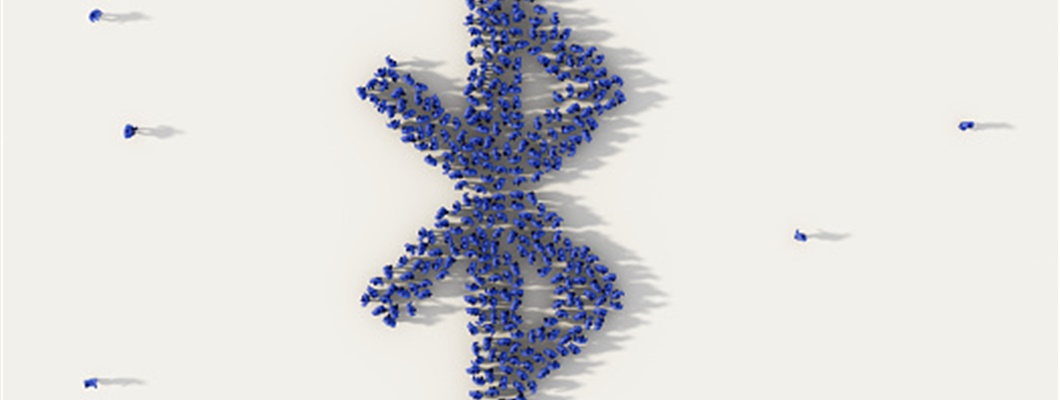The Bluetooth Core Specifications v5.3, released mid-July 2021, is the latest version of Bluetooth, the number one short-range wireless protocol. This new version introduces several features enhancements and a new feature. Enhancements includes the Periodic Advertising Enhancement, and the Channel Classification Enhancement. Bluetooth 5.3 also integrates a new feature called Connection Subrating.
These enhancements and the new feature open the doors to improved user experience, superior reliability, and enhanced energy efficiency in many Bluetooth Low Energy-enabled products.
Enhancements
Periodic Advertising Enhancement
Periodic advertising is based on extended advertisements which is a core feature introduced in Bluetooth 5. It is a form of broadcast communication that is unidirectional where the broadcaster sends advertising packets at a fixed interval. One or more scanners in RF-range can listen for these advertising data with no form of acknowledgement (connection-less communication). This makes broadcast communication flexible, but unreliable. Therefore, some broadcasters resort to increase the probability of their packets being received by introducing redundancy, broadcasting duplicated copies of the same data multiple times in succession.
The new enhancement is the introduction of the AdvDataInfo (ADI) field that can be included in periodic advertising packets, enabling more efficient processing of redundant data.
The Bluetooth Low Energy (Bluetooth LE) stack consists of the Bluetooth LE controller and the Bluetooth LE host. Without the AdvDataInfo field, all periodic advertising packets are reported by the controller to the host on the scanner side, including duplicated copies of already received packets. This can lead to wasted processing energy on the scanner side.

By allowing the broadcaster to include the AdvDataInfo field in periodic advertising packets, scanner(s) can now immediately detect when they receive a duplicate of a previously received packet and discard it in the controller rather than passing it to the host. The earlier a scanner can identify and discard redundant packets, the less energy it spends processing those redundant packets and the more time it can spend scanning other channels. In other words, not processing redundant packets not only gives energy savings, but it can also increase the RX duty cycle of one of the other channels.

With the Bluetooth 5.3 Periodic Advertising Enhancement, any Bluetooth LE product utilizing periodic advertising can now enjoy an energy-savings advantages on receiving devices.
Channel Classification Enhancement
One of the many techniques used by Bluetooth LE to overcome radio interference is adaptive frequency hopping (AFH). Bluetooth LE divides the 2.4 GHz ISM frequency band into 40 channels and swiftly switch between most of those channels when transmitting packets. To further reduce the likelihood of interference, Bluetooth LE adapts a hopping sequence (channel map). Channels are classified, busy or highly noisy channels are labeled as “bad” and avoided when sending packets, while less-crowded channels are labeled “good”.
Prior to Bluetooth 5.3 Channel Classification Enhancement, when a Bluetooth LE connection is established between a central device and a peripheral device, only the central is involved in the process of channel classification. This might not be an issue if the central and the peripheral devices are in close physical proximity as they are very likely experiencing the same RF conditions. However, if the central and peripheral devices are not close to each other, they might experience different RF conditions. Thus, when channel classification is performed only by the central device, it is possible that the channel map can contain channels classified as “good” which are not a suitable choice for the RF conditions of the remote peripheral. In such situation, there is the likelihood of packet collisions, connection dropouts, and it overall affects throughput negatively.
With the Bluetooth 5.3 Channel Classification Enhancement, both the peripheral device as well as the central are involved in the process of channel classification. The peripheral device can now report its RF conditions and suggest channel classifications to the central device so they too can be considered when updating the central device’s channel map. The Channel Classification Enhancement enables both devices to determine which channels are performing well and are “good”.

All Bluetooth LE connection-orientated communication can benefit from the Channel Classification Enhancement to improve the wireless performance in terms of throughput and reliability, and reduce the likelihood of packet collisions.
New Feature
Connection Subrating feature
Bluetooth LE connections offer a highly flexible way to adapt to dynamic changes of requirements in terms of data throughput and power. A high duty cycle connection achieves higher data throughput on the expense of increased power consumption, while a low duty cycle connection saves power on the expense of data throughput.
The duty cycle of a Bluetooth LE connection can be changed dynamically through what is known as a connection update procedure. For instance, a peripheral sensor device with stable readings (within a predefined interval) could select initially a low duty cycle connection to save power. However, when the sensor's readings are outside the predefined stable interval, it could tighten monitoring and now switch to higher duty cycle connection, through a connection update procedure, to efficiently upload the sensor data to a central device.
Prior to Bluetooth 5.3, the way connection update procedure is implemented might take long time to finish. Switching from a high duty cycle connection to a low duty cycle connection and vice versa could take noticeable time. This might impact the user experience negatively in some use cases.
The new Bluetooth 5.3 Connection Subrating feature enables fast switching between low and high duty cycles of Bluetooth LE connections, improving the user experience of certain use cases. It enables quicker switching between high to low duty cycles enabling a device to return to power saving state faster. Subrated connections are also able to handle variable packet rates or bursty traffic more efficiently.
The use cases expected to benefit from subrated connections include Bluetooth LE Audio products such as hearing aids, Bluetooth sensors products and more.



-

Salman
-
Cancel
-
Vote Up
0
Vote Down
-
-
Sign in to reply
-
More
-
Cancel
Comment-

Salman
-
Cancel
-
Vote Up
0
Vote Down
-
-
Sign in to reply
-
More
-
Cancel
Children